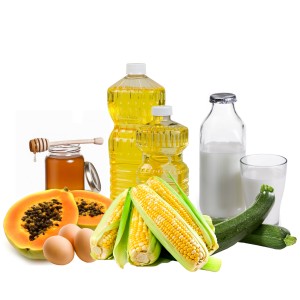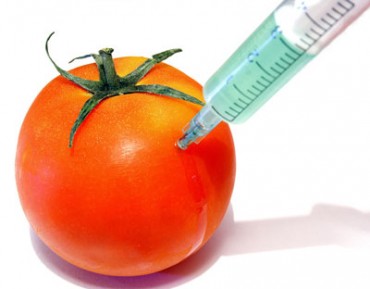GMOs, or “Genetically Modified Organisms,” are plants or animals that have been genetically engineered with DNA from bacteria, viruses or other plants and animals. These experimental combinations of genes from different species cannot occur in nature or in traditional crossbreeding.
Are GMOs safe?
Most developed nations do not consider GMOs to be safe. In more than 60 countries around the world, including Australia, Japan, and all of the countries in the European Union, there are significant restrictions or outright bans on the production and sale of GMOs.
What are the impacts of GMOs on the environment?
Over 80% of all GMOs grown worldwide are engineered for herbicide tolerance. As a result, use of toxic herbicides like Roundup has increased 15 times since GMOs were introduced. GMO crops are also responsible for the emergence of “super weeds” and “super bugs:’ which can only be killed with ever more toxic poisons. GMOs are a direct extension of chemical agriculture, and are developed and sold by the world’s biggest chemical companies. The long-term impacts of GMOs are unknown, and once released into the environment these novel organisms cannot be recalled.
Although the industry aggressively tries to discredit all studies showing potential harm, there are many showing toxicity in animals that predict serious medical consequences in humans from long-term exposure. Finally, contrary to industry claims, genetically modified crops have produced no increase in yield, have elevated the use of herbicides tenfold, and have resulted in no social or economic benefit except for the reduction of factory farm labor costs.
How do GMOs affect farmers?
Because GMOs are novel life forms, biotechnology companies have been able to obtain patents with which to restrict their use. As a result, the companies that make GMOs now have the power to sue farmers whose fields are contaminated with GMOs, even when it is the result of inevitable drift from neighboring fields. GMOs therefore pose a serious threat to farmer sovereignty and to the national food security of any country where they are grown.
Agricultural products are segmented into two groups: (1) those that are high-risk of being GMO because they are currently in commercial production, and (2) those that have a monitored risk because suspected or known incidents of contamination have occurred and/or the crops have genetically modified relatives in commercial production with which cross-pollination (and consequently contamination) is possible.
 High-Risk Crops (in commercial production; ingredients derived from these must be tested every time prior to use in Non-GMO Project Verified products (as of December 2011):
High-Risk Crops (in commercial production; ingredients derived from these must be tested every time prior to use in Non-GMO Project Verified products (as of December 2011):
- Corn
- Cotton
- Papaya
- Soy
- Sugar Beets
Monitored Crops (those for which suspected or known incidents of contamination have occurred, and those crops which have genetically modified relatives in commercial production with which cross-pollination is possible; we test regularly to assess risk, and move to “High-Risk” category for ongoing testing if we see contamination)
- Flax
- Rice
- Wheat
- Tomatoes: In 1994, genetically modified Flavr Savr, tomatoes became the first commercially produced GMOs. They were brought out of production just a few years later, in 1997, due to problems with flavor and ability to hold up in shipping. There are no genetically engineered tomatoes in commercial production, and tomatoes are considered “low-risk” by the Non-GMO Project Standard.
- Potatoes: Genetically modified NewLeaf potatoes were introduced by Monsanto in 1996. Due to consumer rejection by several fast-food chains and chip makers, the product was never successful and was discontinued in the spring of 2001. There are no genetically engineered potatoes in commercial production, and potatoes are considered “low-risk” by the Non-GMO Project Standard.
Top Worst GMO Foods for Your GMO Foods List
1. Corn: This is a no-brainer. If you’ve watched any food documentary, you know corn is highly modified. “As many as half of all U.S. farms growing corn for Monsanto are using genetically modified corn,” and much of it is intended for human consumption. Monsanto’s GMO corn has been tied to numerous health issues, including weight gain and organ disruption.
2. Soy: Found in tofu, vegetarian products, soybean oil, soy flour, and numerous other products, soy is also modified to resist herbicides. As of now, biotech giant Monsanto still has a tight grasp on the soybean market, with approximately 90 percent of soy being genetically engineered to resist Monsanto’s herbicide Roundup. In one single year, 2006, 96.7 million pounds of glyphosate was sprayed on soybeans alone
3. Sugar: According to NaturalNews, genetically-modified sugar beets were introduced to the U.S. market in 2009. Like others, they’ve been modified by Monsanto to resist herbicides. Monsanto has even had USDA and court-related issues with the planting of its sugar beets, being ordered to remove seeds from the soil due to illegal approval.
4. Papayas: This one may come as a surprise to all of you tropical-fruit lovers. GMO papayas have been grown in Hawaii for consumption since 1999. Though they can’t be sold to countries in the European Union, they are welcome with open arms in the U.S. and Canada.
5. Cotton: Found in cotton oil, cotton originating in India and China in particular has serious risks.
6. Dairy: Your dairy products contain growth hormones, with as many as one-fifth of all dairy cows in America are pumped with these hormones.
The dangers of some of these foods are well-known. The Bt toxin being used in GMO corn, for example, was recently detected in the blood of pregnant women and their babies. But perhaps more frightening are the risks that are still unknown.
With little regulation and safety tests performed by the companies doing the genetic modifications themselves, we have no way of knowing for certain what risks these lab-created foods pose to us outside of what we already know.
The best advice: Steer clear of them altogether.























































Comments